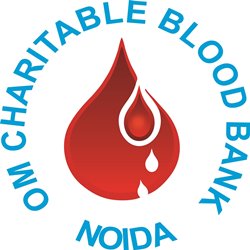What is Aphaeresis ?
Apheresis (a Greek word meaning “to remove”) is a medical technology in which the blood donor or the patient is passed through an apparatus that separates out one particular constituent and returns the remainder to the blood circulation. It is thus an extracorporeal therapy.
Though most blood is donated as whole blood, it is also possible to donate only a portion of blood using a technique called “Aphaeresis”. During the apheresis donation, we draw blood from the donor’s vein through a sterile tube into a cell-separator machine. The machine spins the blood (called centrifugation) to separate the needed component-platelets/plasma/red cells, and then returns the remaining components to the donor in the same vein or other arm. By appropriately adjusting the instrument, a selected portion of the blood such as platelets can be recovered. Patients with cancer or leukemia, transplant patients, and people with blood disorders such as aplastic anemia, benefit from platelet transfusions. During chemotherapy and radiation treatment, both cancer cells and platelets are destroyed. Many of these patients need platelet transfusions to prevent uncontrolled bleeding. While this process takes slightly more time than a regular whole blood donation, such donations are completely safe. It takes approximately one hour for a plasma donation and approximately two hours for a platelet donation.
Needle, tubing, and collection bags in the machine are sterile and discarded after each donation. Experienced staff closely supervises the procedure and take readings from time to time. Donors can watch television or videos, listen to music, read books during the donation process. The donation does not significantly decrease the number of platelets in the donor’s body, and the donated platelets are replaced in approximately three days. Platelet donors can donate every three days and up to 24 times a year. If donors alternate between donating platelets and whole blood or plasma, the waiting time varies.
Plateletpheresis, like it sounds, is the collection of platelets by apheresis, while returning the RBCs, WBCs and component plasma. The yield is normally the equivalent of between six and ten random platelet concentrates.
Quality control demands the platelets from apheresis be equal to or greater than 3.0 x 1011 in number and have a pH of equal to or greater than 6.0 in 90% of the products tested and must be used within five days.
Single Donor Platelet (SDP)
| Age : | 18 -65 years |
| Weight : | 55 kg and above |
| Hemoglobin: : | 12.5gm/dl and above |
| Blood pressure : | Systolic : 100-150 mm of Hg Diastolic : 60-90 mm of Hg |
| Pulse : | 60-100/minute |
| Platelet Count: : | 2.0×103/ µl |

